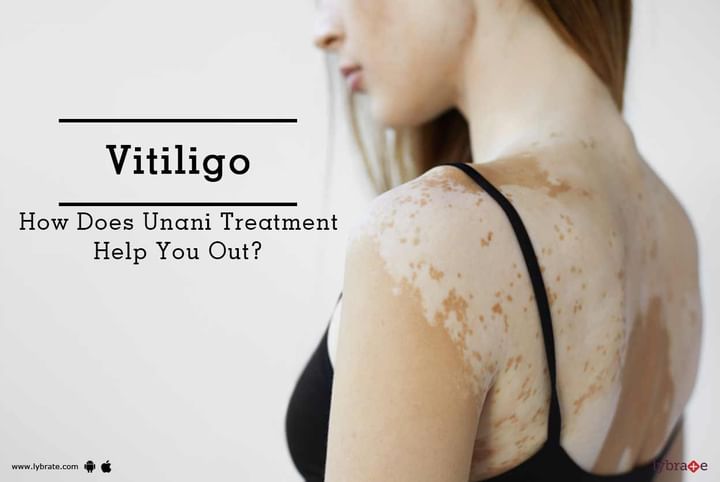Vitiligo - How Does Unani Treatment Help You Out?
Bars (Vitiligo/Leucoderma):
Bars also known byvariety of names such as Safed Daagh, Safed Kodh, Phuleri and Savitra. It is askin-depigmenting disease which results in disfiguration of the skin. Thedisease negatively affects self-esteem, social status and ultimately, patient’squality of life. It appears as single or multiple depigmented patches on anypart of the body. These patches gradually increase in size and cause a lot ofpsychological stress to the patient. Eventually, it spreads to the whole bodyresulting in a condition called Bars-e- Muntashir (expanded vitiligo).
Vitiligo starts withlocalized loss of skin’s pigmentation. It occurs when skin pigment cells die orare unable to function. These patches are more commonly seen in sun-exposedareas, viz., the hands, feet, arms, face, and lips. Other areas of the bodywhere this is commonly seen are the armpits and groin, the area around themouth, eyes, nostrils, navel and genitals as well. According to Unani concept, Vitiligo is caused due to disarrangement of phlegmatic humour. It is believedthat vitiligo onset is strongly affected by environmental factors.
Certain Facts About Vitiligo:
- Vitiligo is neither contagious nor infectious disease. It is more of a social stigma than a disease.
- Vitiligo is sometimes associated with autoimmune and inflammatory diseases.
- Vitiligo is an acquired disease characterized by skin depigmentation due to destruction or malfunction of melanocytes (cells that produce melanin).
- Vitiligo is prevalent worldwide. It is estimated that about 1-2 percent of world population which accounts to approximately 100 million people suffer from this disease.
- The prevalence in different countries ranges from less than 0.1% to more than 8% of the general population.
- In India, an estimated 2-3 percent of the population suffer from this condition. The rate is higher in coastal areas like Andhra Pradesh, West Bengal and Kerala.
- There is no racial or gender bias for this disease but it is more widespread amongst the middle-aged women. Very few women in younger age suffer from this problem.
Despite these data, worldwide awareness and knowledge of vitiligo are often rather inadequate. Several misconceptions about this disease have become major challenges inthe treatment. These include “fate” or “evil eye” wrong ideas aboutcontagiousness, akin to the victims of leprosy. Even there is misconception ormisinformation among medical fraternity thinking that there is no cure. They label vitiligo as a purely aesthetic problem, not worthy oftreatment or research.
While vitiligo is not life-threatening, it has heavy psychosocial impact on the quality of life, particularly when areas, such as face and hands, are affected. The negativeimpact is even worse for patients with darker skin types, because of the highercontrast of white patches on their skin.
Depression, anxiety, social embarrassment and self-consciousness caused by vitiligo are very frequent, and the disease usually leads to a highly significant decrease of the quality of life and restriction of participation in domestic and social life. Stigmatization, avoidance and concealment are the most typical reactions to vitiligo. Sometimes rejection, insult, discrimination at work and sexual difficulties, including being considered unfit for marriage, are also frequent in the society.
In recognition of the importance of this condition, the World Vitiligo Day is observed every year on June 25th to develop global awareness.
Signs and Symptoms (Alamaat):
The only symptom of vitiligo is the presence of whitish or pale patchy areas of depigmented skin which tend to occur on the extremities. It starts off as a single pale spot and spreads into multiple patches which become whiter, as skin loses its pigmentation. The patches are initially small, but often grow and change in shape. When skin lesions occur, they are most prominent on the face, hands and wrists. The loss of skin pigmentation is particularly noticeable around body orifices, such as the mouth, eyes, nostrils, genitalia and umbilicus. Some lessons have increased skin pigment around the edges.
Causes of Vitiligo(Asbaab-e-Bars):
The cause of Bars is still unknown. According to Unani Medicine it is caused due to the weakness of Transformative Faculty (Quwwat-e-Mughaiyirahwa Mushabbiha) of the skin and liver. Blood Impurities (Fasad-ud-Dam) and Coldness of Blood (Burudat-ud- Dam) also aggravate this condition. It occurs usually due to coldness (Burudat) of the temperament (Mizaj) of the organs. The quantity of phlegm (Balgham) increases in the blood and the nutrition doesn’t reach to the cells of the particular organ.
In Modern Medicine, multiple theories have been suggested. According to one view, skin pigmentation occurs mainly due to the malfunctioning of the endocrine glands and the liver. It is also widely held that changes in the immune system are responsible for the condition. While genetic predisposition undoubtedly exists, it is also believed that vitiligo is strongly affected by environmental factors. Apart from this, exposure to certain chemicals such as phenol and injury to skin predispose the disease. The severity of pigmentation problem is associated with several diseases and disorders.
Treatment (Elaaj):
Sootshekhar Ras swarn Yukta 125 mg (1 tablet) twice a day
Gandhak Rasayan Avleh 10gm twice a day
Bakuchi lepam for local applicantion



+1.svg)
